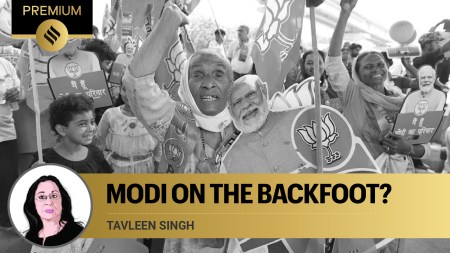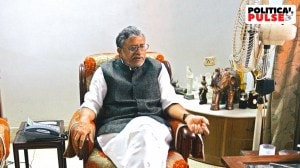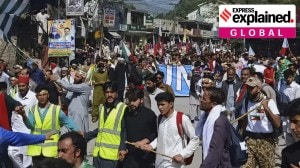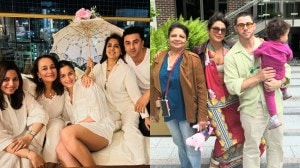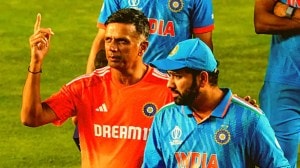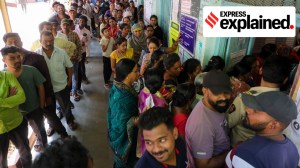- India
- International
A history of Sri Lankan refugees in India
Sri Lanka’s dire economic situation has sparked fears of a new wave of refugees migrating to Tamil Nadu. India already hosts over 100,000 Sri Lankan Tamils who are stuck in a state of limbo, existing neither as citizens nor refugees in the eyes of the law.
 Refugees from Sri Lanka largely arrived in India in three waves in 1964, 1983 and 2009 respectively.
Refugees from Sri Lanka largely arrived in India in three waves in 1964, 1983 and 2009 respectively. When 16 Sri Lankan Tamils came ashore in Tamil Nadu last month, they were following a long line of predecessors who had fled war and discrimination in Sri Lanka. This time, while the reasons were more economic than political, the challenges facing the new wave of refugees from the island nation are unlikely to be different.
They are certain to join the approximately 100,000 Sri Lankans living in refugee camps across India or if they’re very lucky, the 34,000 individuals residing outside of the camps. This new wave of migration is unlikely to ease up anytime soon, explains Dr C Valatheeswaran, a Senior Fellow at the International Institute of Migration and Development (IIMD), adding that while we won’t see refugees arriving in the same numbers as before, more are surely to come.
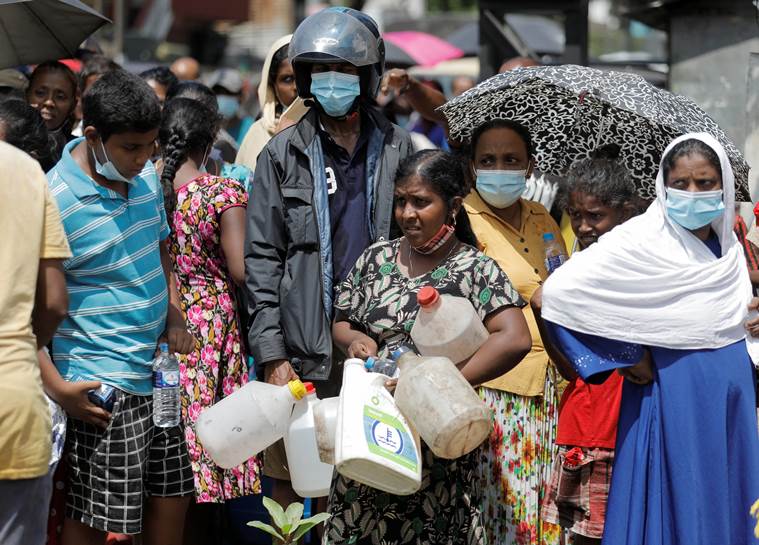 People wait to buy kerosene at a Ceylon Petroleum Corporation fuel station, amid the country’s economic crisis in Colombo, Sri Lanka. (Reuters photo)
People wait to buy kerosene at a Ceylon Petroleum Corporation fuel station, amid the country’s economic crisis in Colombo, Sri Lanka. (Reuters photo)
History of Sri Lankan immigration into India
Sri Lanka is located barely 30 miles off the coast of Tamil Nadu and there has long been cross-strait migration between the Tamil population of the two regions. Irudaya Rajan, the director of IIMD, explained to indianexpress.com that due to the strong historic and cultural bond shared by Tamils in both India and Sri Lanka, Tamil refugees have always been welcomed into the state. Refugees largely arrived in India in three waves in 1964, 1983 and 2009 respectively.
The first influx came when Indian Prime Minister Lal Bahadur Shastri and Sri Lankan Prime Minister Sirimavo Bandaranaike signed an agreement that would allow 800,000 people who had neither Indian nor Sri Lankan citizenship to become citizens of the country of their choice. Roughly 500,000 of those individuals chose to come to India, mostly because they or their ancestors had migrated from Tamil Nadu to Sri Lanka during the era of the British Raj.
Despite a follow up pact being signed in 1974 by Prime Minister Indira Gandhi, for decades many of the arrivals remained stateless. By 1982, the Indian government had voided the pact with only 280,000 refugees having been placed in India successfully. By now, according to Valatheeswaran, most of the original refugees have lost the documentation they would need to return to Sri Lanka or become citizens of India, leaving them in a state of limbo.

In 1983, the Liberation Tigers of Tamil Eelam (LTTE) killed 13 Sri Lankan soldiers, kicking off a bloody civil war and forcing several thousand Tamils to flee to India. Once again, Tamil Nadu opened its borders and there was strong ground support for the Tamil cause in Sri Lanka. The situation changed in 1991 when Indian Prime Minister Rajiv Gandhi was assassinated by a member of the LTTE.
After this, Sri Lankan refugees were seen as “enemies of the state”, which had massive ramifications for both the refugees already in India and those who were yet to come, explained Abhijit Dasgupta, a former professor of sociology at the Delhi School of Economics.
In 2009, during the twilight of the civil war, another wave of Sri Lankan Tamils, fearing violence and persecution on the island, sought refuge in India. However, those newcomers were officially designated as illegal immigrants and not refugees. Many of the provisions that applied to earlier waves of refugees, notwithstanding the actual granting of the same, were no longer applicable to the new arrivals.
 The family of four had set sail from the Jaffna coast in the north of Sri Lanka. (Photo: Special Arrangement)
The family of four had set sail from the Jaffna coast in the north of Sri Lanka. (Photo: Special Arrangement)Sri Lankan Tamils in India can widely be divided into those who reside in the camps and those who do not. The distinction, Dasgupta notes, is contingent on their economic status at the point of arrival. The wealthy, educated refugees largely migrated to the cities and were soon indistinguishable from the local population. The poor, illiterate ones on the other hand, were forced to reside in camps, and according to Dasgupta “ segregated from the local population, barred from living or working amongst them”.
State of refugee camps
Describing life in the camps, Arockiam Kulandai, author of Camp Life of Sri Lankan Refugees in India, acknowledged that conditions have improved since 2008, but says the needs of refugees are still not fulfilled, especially when it comes to housing and sanitation.
Anthony Goreau Ponceaud, who has conducted extensive research in the camps, agrees that in terms of basic needs, refugees who are settled in camps receive financial assistance and subsidised food. However, he states that the cash doles provided by the Tamil Nadu government are not enough for the refugees to “live with dignity”.
Kulandai and Ponceaud both stress that while the refugees receive a decent education, they often struggle to find work outside of menial jobs. For women in particular, employment is hard to come by. This situation is compounded by the fact that refugees need a permit to leave the camps and although some have now received an Aadhaar card, most still possess only a refugee ID card, on the basis of which, they are discriminated against by local communities.
As a result, refugees struggle to leave the camps, bound to the cycle of poverty they are stuck in, with some spending their entire lives, from birth to death, unable to escape from the clutches of economic stagnation. To complicate the matter, there is also no pathway to citizenship for these refugees, making it increasingly harder for them to integrate into society as time goes by.
However, despite these challenges, Ponceaud argues that along with the Tibetans, the Sri Lankans are considered the most “favourably treated refugee group” by the Indian authorities. Kulandai also says they are treated well, except in times of conflict. Valatheeswaran adds that while they are reluctant to disclose this to authorities in fear of losing their monetary allowance, most refugees also receive a significant remittance from the Sri Lankan diaspora. Their economic condition is therefore precarious but not quite intolerable. Still, refugee status is supposed to be time bound with the ultimate goal being either repatriation or integration.
Repatriation and integration
Dasgupta remembers that India tried to repatriate Sri Lankan refugees on three occasions but because the process was “badly handled” by the governments of both countries, these efforts mostly failed. Neither India nor Sri Lanka wanted the refugees, many of whom had no one to vouch for them in either country. A UN agency even set up a bureau in Chennai in 1995 to help Tamils go back to Sri Lanka, but even they were unable to overcome the political deadlock.
In a conversation with indianexpress.com, Anne-Sophie Bentz, a senior lecturer at the University of Paris, says although the UN bureau is still in place, there are no longer many candidates for repatriation. This is because of two primary reasons. The first is that many of the refugees were born in the camps or had spent most of their lives there. They have no connections to Sri Lanka and no one to welcome them back home. The second, more pervasive reason, she says is that Tamils are still widely treated unfairly in Sri Lanka, with the government in Colombo seizing their land and the non-Tamil majority, discriminating against them.
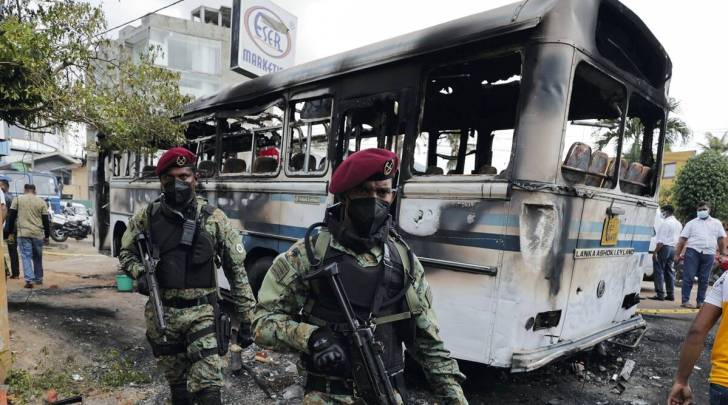 Sri Lankan army commandos walk past a damaged bus after it was set on fire by demonstrators in Colombo, Sri Lanka April 1, 2022. (Reuters)
Sri Lankan army commandos walk past a damaged bus after it was set on fire by demonstrators in Colombo, Sri Lanka April 1, 2022. (Reuters)
Bentz notes that while repatriation may not be appealing, refugees would be willing to get resettled to another country, preferably in North America, Europe or Australia. Given their lack of documentation, and a lack of political will however, opportunities for resettlement are scarce and “there’s nothing that India can do about that.”
It is also challenging to get them integrated into local communities by way of Indian citizenship. For one, there is no mechanism for formal integration from the government, with the State and Centre at permanent loggerheads over the issue. Additionally, according to Bentz, refugees are largely “ambivalent” towards Indian citizenship. Quoting a refugee she had spoken with, Bentz writes that “to accept Indian citizenship means to refuse the assistance from the Government of Tamil Nadu”.
People living in camps get the same basic help that Indian citizens get, along with a host of other benefits as refugees including free access to electricity and water, free computers, and reserved places in higher education. Thus, says Bentz, “by insisting on getting both, they make two contradictory sets of claims: demands to be treated as equal citizens and demands for privileged treatment as refugees.”
It is important to note that some Sri Lankan Tamils have received either assistance or citizenship from the Indian government to help them integrate into society. Tamils who came in the late 1960s and ‘70s have been given minority certificates which designate them as Scheduled Castes, Scheduled Tribes, or Other Backward Classes. This in turn helps them avail of benefits accorded to those reserved groups. Additionally, under pacts signed in 1964 and 1974 by Shastri and Gandhi respectively, several Sri Lankan Tamils have already received citizenship. However, that vast majority who arrived later are still relegated to the fringes of society.
The State and the Centre
Coming to the refugees who do want citizenship (an estimated 10 per cent according to Valatheeswaran), they have to deal with a cumbersome bureaucratic process, a great deal of ambiguity and the transient nature of political power. At a state level, there is often considerable support for the plight of refugees but despite that, tangible gains are often hard to come by.
Valatheeswaran states that the party in power usually ignores implementing meaningful changes, a fact repeatedly used by the opposition against them. However, when the opposition is later in power, the same narrative emerges with the roles of the parties reversed.
Even if the political will was stronger, there is little that the state government can do. Citizenship is granted at the discretion of the Union Government and at the most, the state can appeal on their behalf, with the rest of its purview pertaining only to the conditions of the camps.
Although India receives many refugees from neighbouring countries such as Sri Lanka, Bangladesh and Bhutan, it has no specific legal framework to regulate their entry and status. India is also not a signatory to the 1951 Geneva Convention Relating to the Status of Refugees and is therefore not bound by international law. Officially, under Indian law, any non-citizen who enters India without a visa is considered to be an “illegal migrant” with no special provisions made for refugees or asylum-seekers.
While many hoped that the Citizenship Amendment Act (CAA) of 2019 would clarify the situation, it has only led to further confusion. Amongst fear that refugees would be deported, Finance Minister Nirmala Sitharaman was forced to clarify that “we (the government) is not snatching away anyone’s citizenship, we are only providing them that.” Despite promises that a mechanism would be introduced to facilitate the citizenship of Sri Lankan refugees, no such measure has been elucidated by the Centre.
In fact, when the Bill was being drafted, the then Home Minister, Rajnath Singh, told the Joint Parliamentary Committee that Sri Lankan Tamil refugees must “prove that they were oppressed on the basis of their “race, religion, sex, nationality, ethnicity, or being a member of a particular group.”
In late 2021, the Tamil Nadu Assembly adopted a resolution urging the Centre to repeal the CAA for reasons including its lack of protections for Sri Lankan Tamils. Chief Minister M K Stalin explained the move by arguing that the CAA was a “big betrayal” of Sri Lankan Tamil refugees as it “usurped the rights” of those who wished to settle in India. Further, he stresses that “it is clearly seen that the CAA was passed in such a way that it does not accord a warm support to the refugees considering their plight, but instead discriminates against them according to their religion and their country of origin.”
Rajan sums up the situation, stating that “the Indian government still has no coherent refugee policy; there is no consistency and decisions are made purely on the basis of political will.” Building upon Rajan’s point, Bentz adds, “Sri Lankan Tamils in India are neither Indian citizens nor de jure refugees, and so are neither totally included, nor totally excluded, putting them in-between the two opposed poles of the refugee-citizen spectrum.”
May 14: Latest News
- 01
- 02
- 03
- 04
- 05


